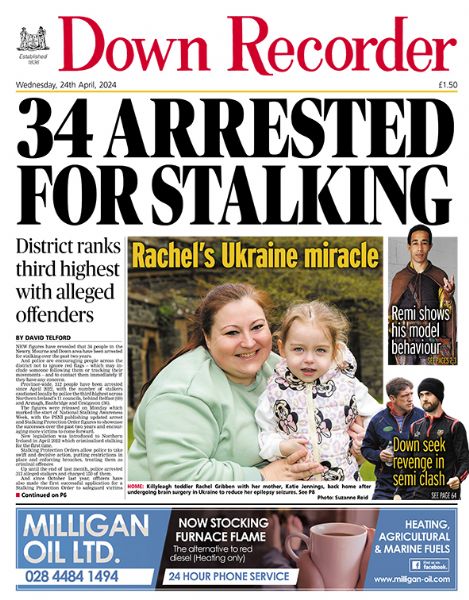Capturing the men of Mourne
Capturing the men of Mourne
2 October 2013
A PHOTOGRAPHIC archive of the Mourne Mountains spanning the 20th century is on display at Down County Museum this month.
Two Men of Mourne is a collection of photographs from Pat Hudson and Cecil Newman.
The images of the mountains and the wider South Down area date from different decades and were taken for different purposes, but all demonstrate a high technical and aesthetic quality.
Pat Hudson (1920-2011) was born in Newry. His father, John F Hudson, was manager of O’Hagan and O’Hare’s chemist’s shop in Newry, and in 1925 the family moved to Kilkeel.
At an early age, with the help of his father and a box Brownie camera, Pat began a lifelong love affair with photography and nature study.
In his earlier years he constructed a makeshift ‘hide’, from which he was able to photograph birds in the garden. Pat then enrolled at Belfast College of Technology, where, after serving his time at the same chemist’s shop in Newry where his father had worked, he qualified as a pharmaceutical chemist.
Time spent doing ‘locums’ around the county let Pat get to know other locations. He was a keen hill walker and formed a rambling club, tramping the Mournes with his friends and camera.
Pat also worked at his father’s pharmacy and used Kilkeel as a base to further explore Ireland and then Europe, always, of course, with his camera. However, this did not satisfy his adventurous spirit and in 1949 he went to work in an East African pharmacy combined with a photographic department.
The photographs which feature in the museum exhibition and publication were taken of the Mournes and south Down in the 1940s. While Pat was taking these photographs purely for his own interest, they also record a world on the brink of great social change.
Cecil Newman (1914-1986) was born in Lisburn in 1914, the son of an RIC policeman whose family had come from a farming background in West Cork.
He grew up in Sydenham, Belfast, and as a young man he enjoyed hiking and youth hosteling and became heavily involved with the Scouts.
Cecil enlisted as a Royal Engineer in 1940 and by the end of the Second World War he had achieved the rank of Major. On his return to Belfast Cecil returned to his job, which he had started shortly before enlisting, with the surveyors’ department at Belfast City Council. His work with the Royal Engineers, and in the reconstruction of Berlin, proved to be useful experience for his career in town planning. He then joined the Ministry of Development and qualified as a Planning Officer in 1957.
Cecil contributed to the overall strategy of the Mourne and Newry Area Plans, as well as providing photographs to illustrate these documents. During the 1970s Cecil concentrated particularly on aerial photography. He was able to use his army connections to join troops on training flights over Northern Ireland in Sioux helicopters — an opportunity not afforded to many. This was a great asset to him in professional terms as a means of assessing and recording the development of landscape and townscape.
A keen photographer from an early age, Cecil had been an Associate of the Royal Photographic Society since the 1940s.
His interest in the rapidly changing urban and rural landscape is evident from the photographs now in the Down County Museum and National Museums Northern Ireland collections.
Those selected to illustrate this collection represent his wide-ranging interests in the Mournes, from archaeological sites to modern buildings, and rubbish dumps to mountain climbing.
Two Men of Mourne opens on the evening of October 10 and there will be a book of the same title on sale at the museum.

